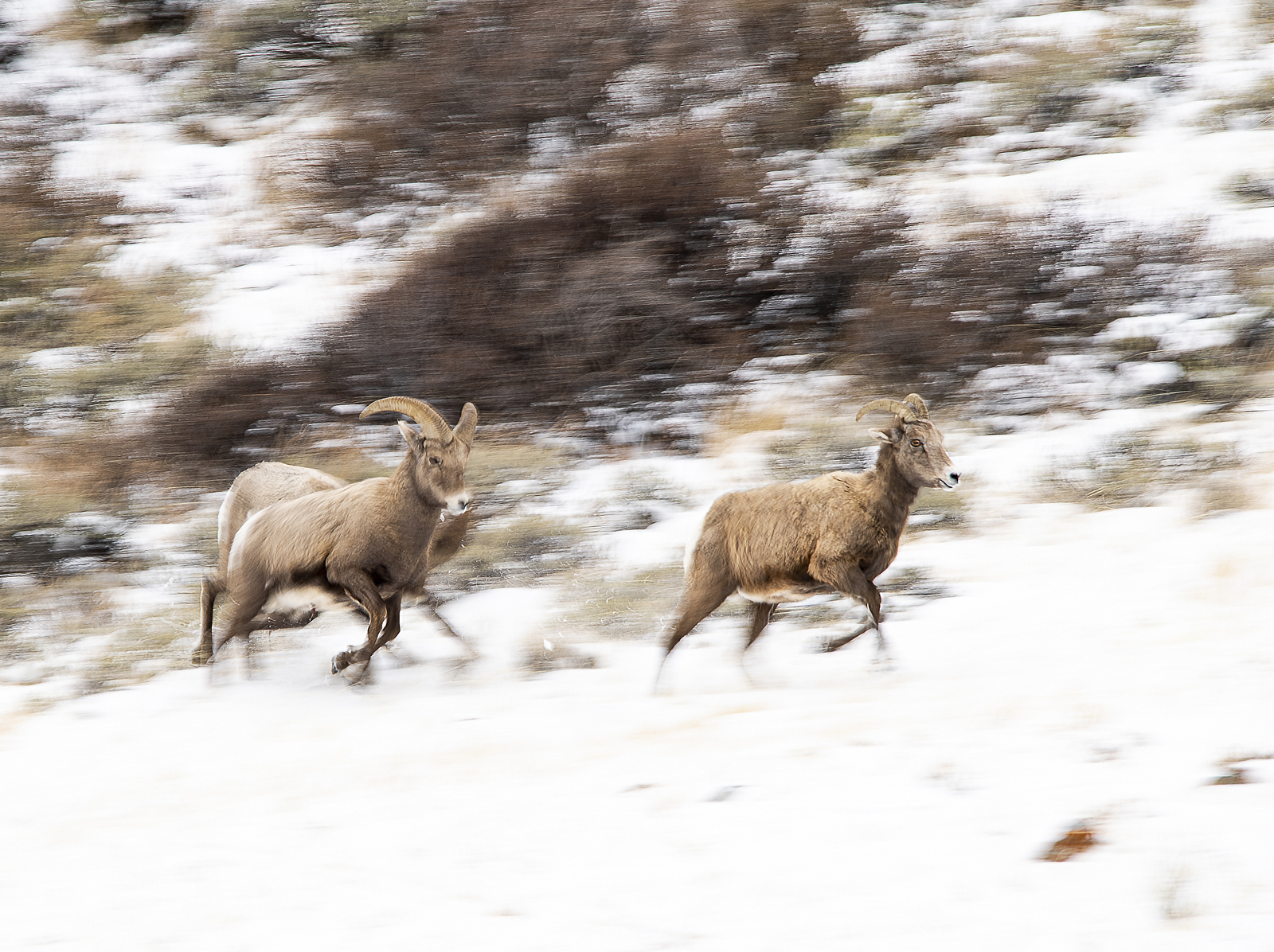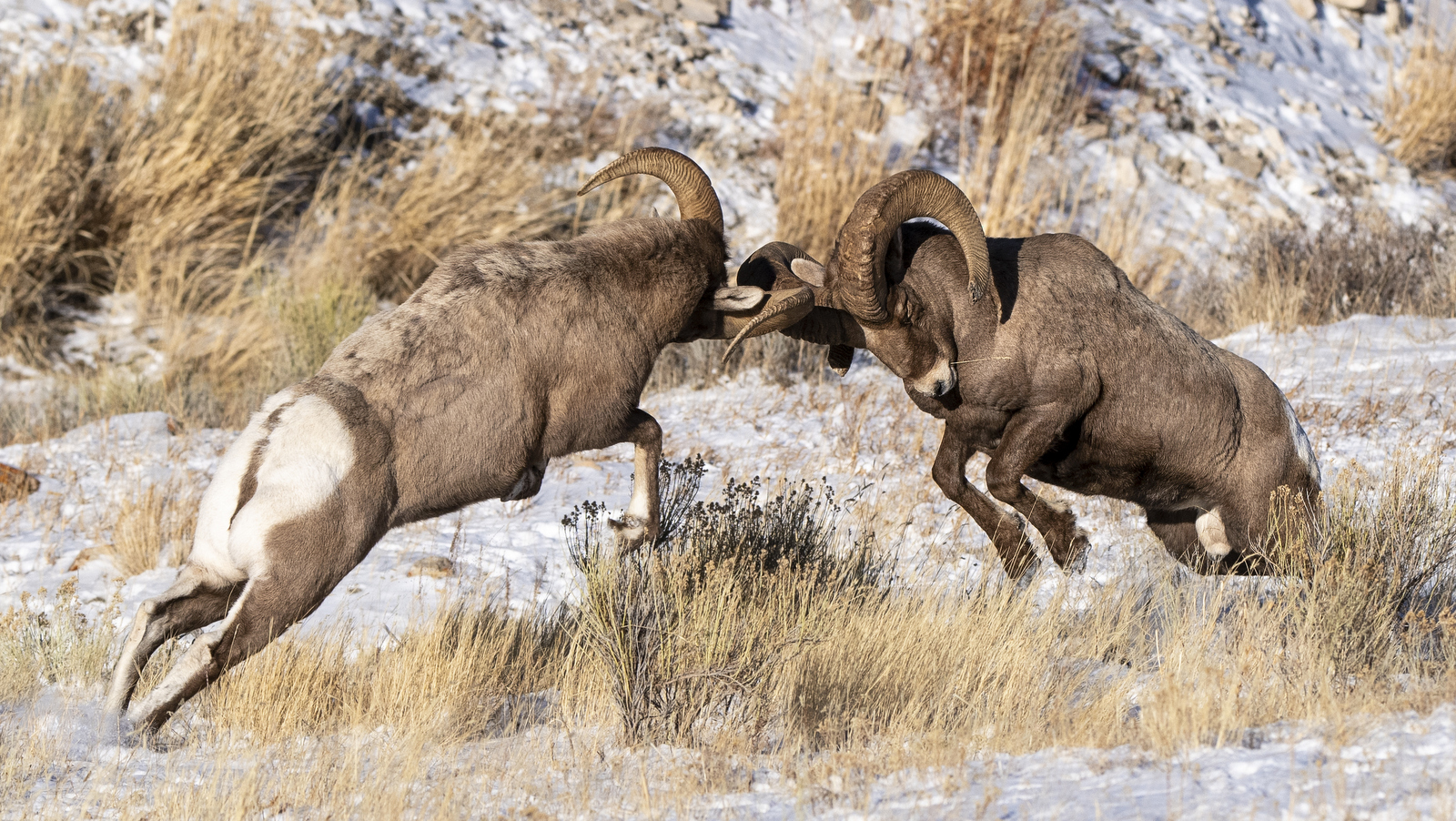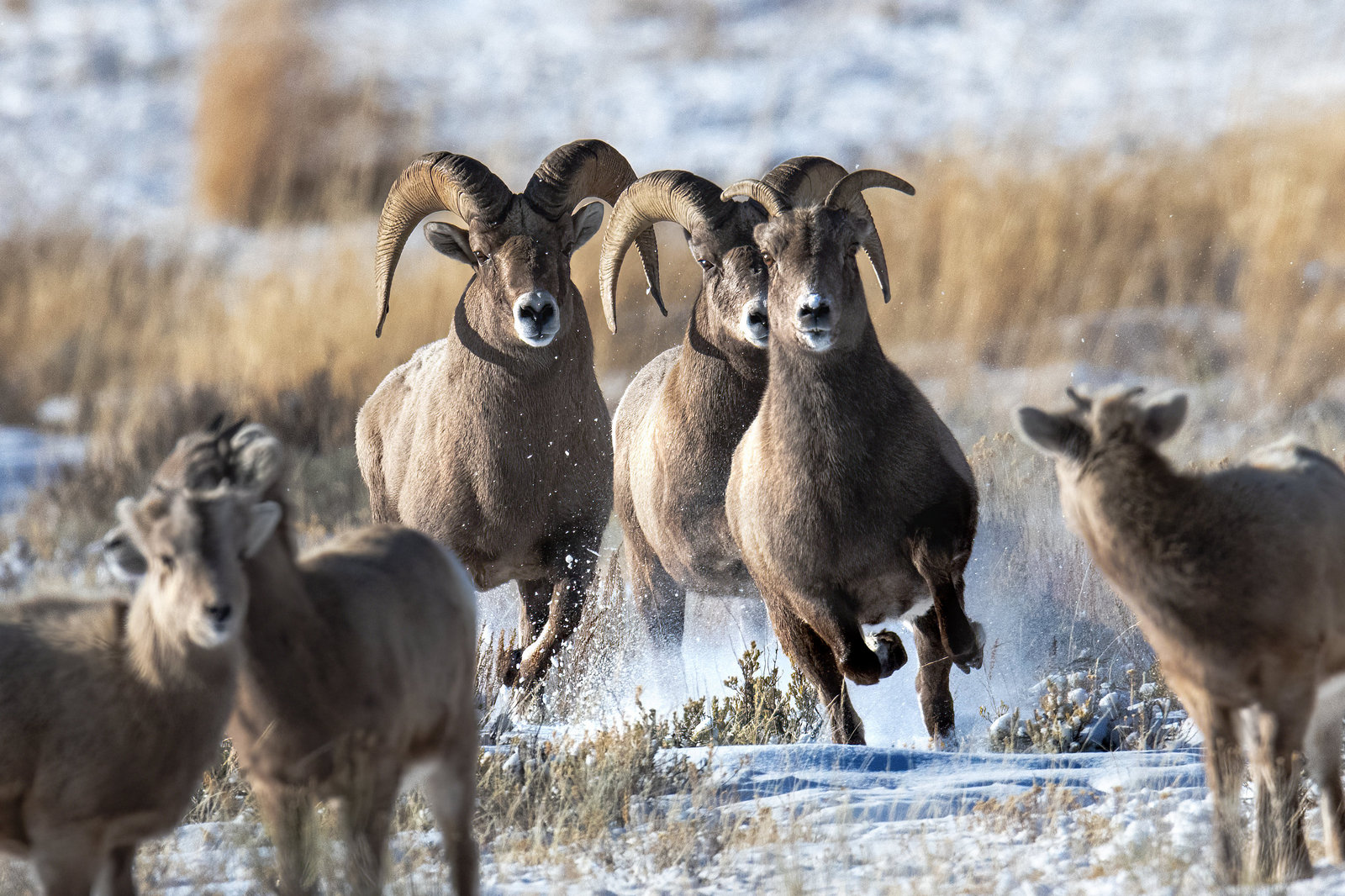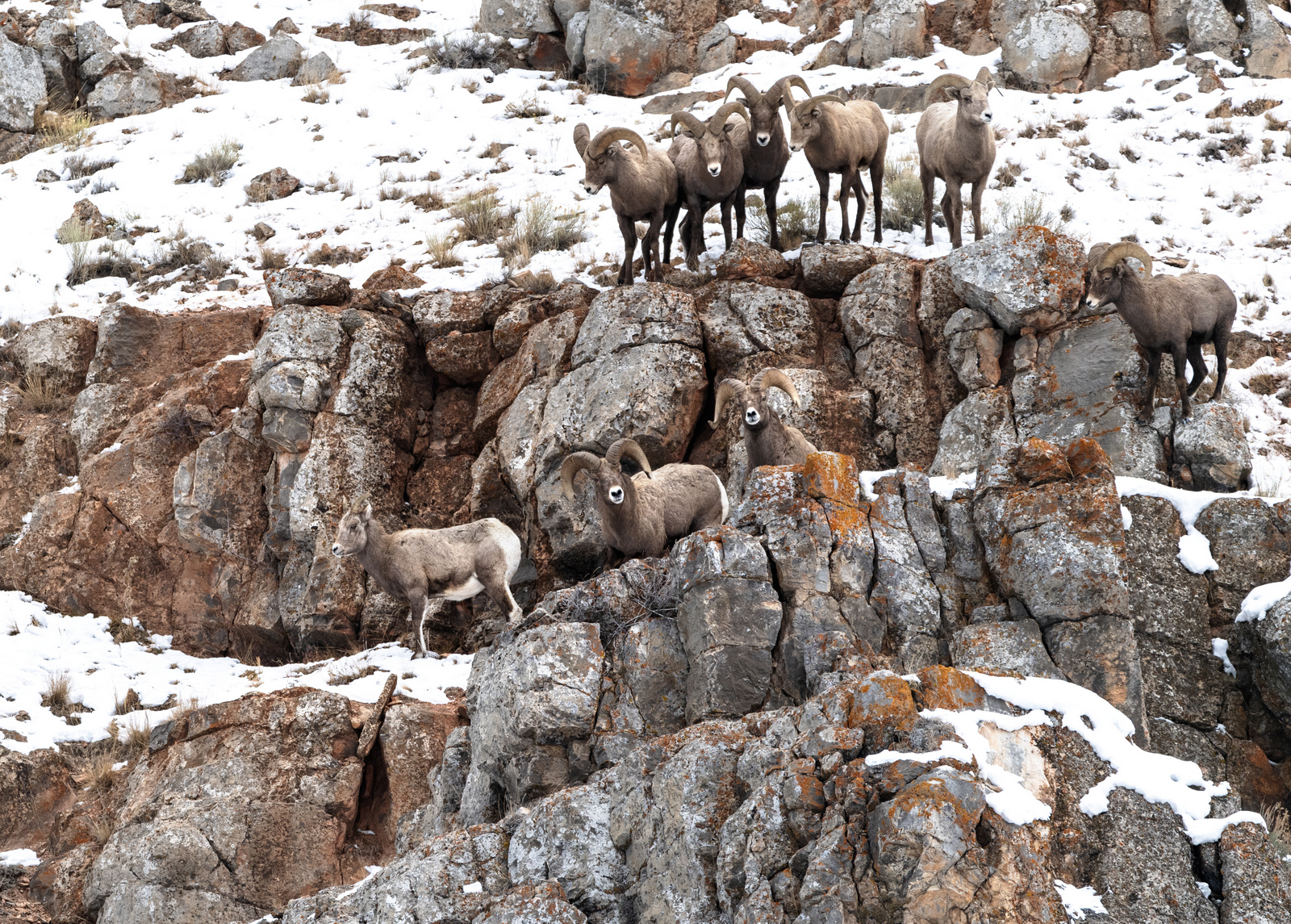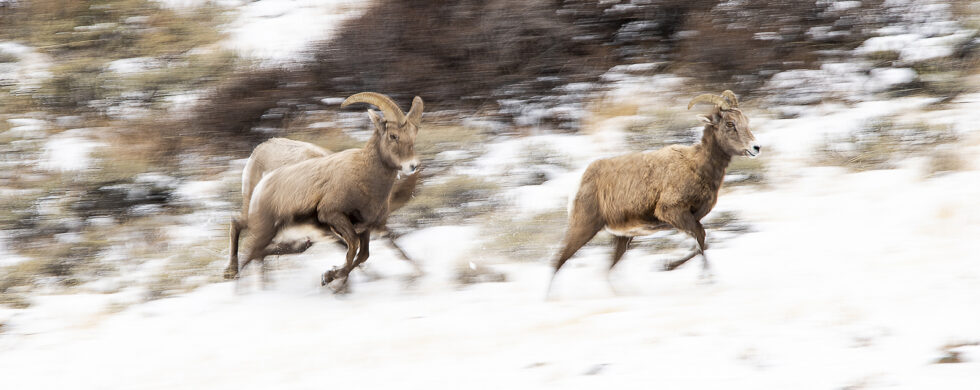
25
2024Tending Toward Success
Shot of the Month – February 2024
Each fall bighorn sheep rams gather at the National Elk Refuge in Wyoming (located just next to the Grand Teton National Park) in hopes of mating and passing along their genes to the next generation. Alas, only the largest and strongest rams earn the right to mate and often will have to fight other rams for dominance. These battles involve smashing those massive horns into each other with great force until one adversary relents:
But even after these brain-numbing battles, the victorious ram’s work is not done. Oh, no, far from it. Now the ram must court the females and stay by their side until one goes into estrus. He must be absolutely relentless in his surveillance. If she climbs up a mountain, he must follow. She goes back down, down he must go. He must fight off any male that approaches her. Day in, day out. Hour after hour. This behavior is called “tending” and is the most successful strategy for winning over a mate. Ewes are most receptive to tending males. (Sage female readers nod their heads in agreement…)
Some males may try a “blocking strategy” to keep a female from reaching the areas where rams are tending ewes. Other males fight a tending male but the ewes are usually not receptive to this approach. (More nodding among the readers….)
Once a female goes into estrus chaos ensues. The dominant male will chase her and attempt to mate but she will not give in so easily. She often spurns all suitors and forces the males to chase her for extended periods. She is testing the males to identify the strongest to ensure that only the best genes are passed on to her offspring. At times multiple rams will chase the ewe. As a ram was trying to copulate with a female I have seen other males dash in and head butt the male to break up the act. So rude!
Two males in pursuit of a female:
In this scene, eight males watch over a female! (she is the one at lower left in the image)
In the first image, I panned my camera to track the running sheep and used a slow shutter speed to blur the background. This is a high-risk technique – if my panning motion does not exactly match the speed of the running animals we end up with a blurry mess. Even if I get the panning right, the animal’s movement may still be at an angle that does not produce a pleasing image. Hundreds of attempts may only create one or two acceptable shots.
Or none.
The key is to keep shooting and taking as many images as possible with the hope that a few will work.
The panning blurs out the background and creates a lovely oil painting effect. The blurred feet of the sheep convey speed and give a sense of the pursuit and energy of the chase.
As you may have gathered, procreation for bighorn sheep is not for the faint of heart. Each fall a ram must endure a grueling gauntlet of battles and tests of patience and stamina that can last for months. All this to earn a few brief moments with an ewe and the possibility of passing on his legacy.
Until next month…
Sources:
Nikon D5, Sigma 150 mm – 600 mm (@ 600 mm), f/14, ISO 100

